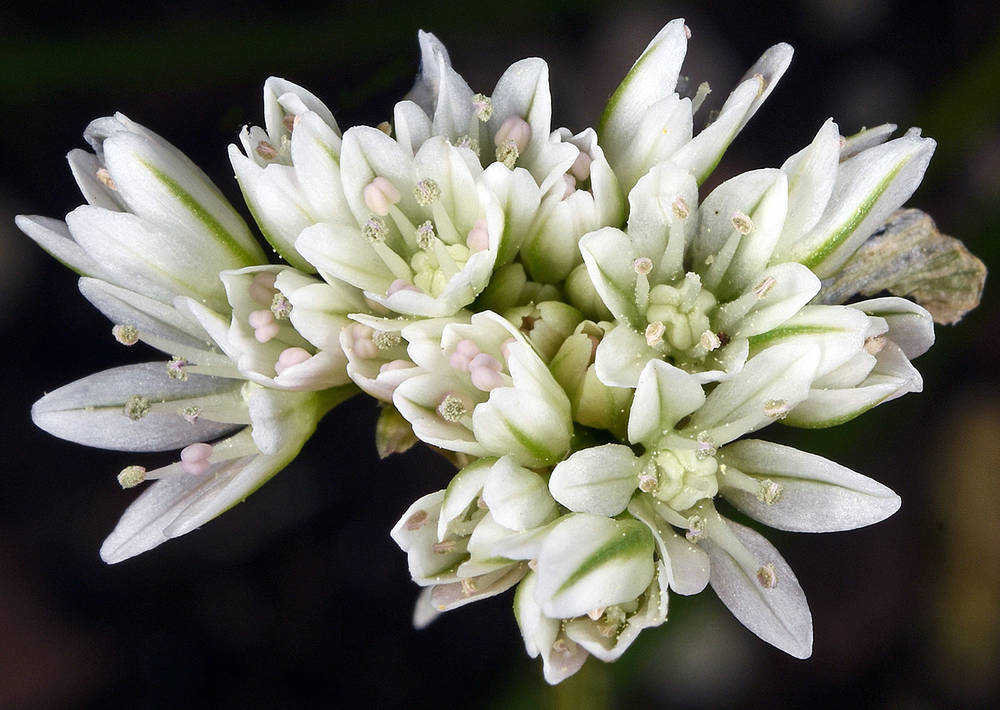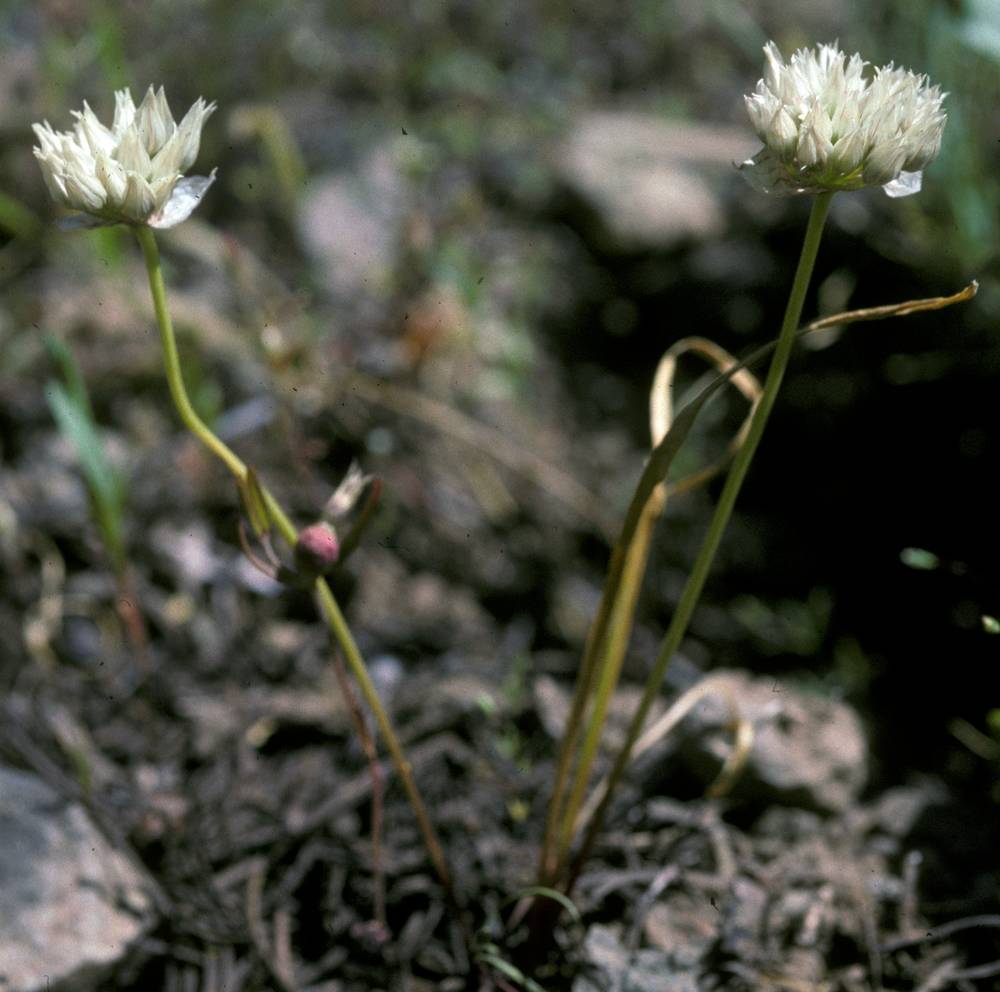Allium madidum
Allium brandegeei
swamp onion
Brandegee’s onion
1–3; larger bulbs each usually with cluster of 10–30 easily detached bulbils to one side of base, globose to ovoid;
outer coats enclosing 1 or more bulbs, membranous; without fibers.
1–5; ovoid to globose;
outer coats enclosing 1 or more bulbs, membranous, usually distinctly cellular-reticulate;
cells isodiametric or more or less narrowly hexagonal, transversely elongate; without fibers.
persistent, green at anthesis, 2;
blades solid; flat or channeled, 10–25 cm × 1–4 mm.
usually persistent, green at anthesis, 2;
blades solid; flat or channeled; more or less falcate, 8–27 cm × 1–3 mm.
persistent; solitary; erect; solid; more or less terete, sometimes ridged, 10–20 cm × 1–2 mm.
persistent; solitary; erect; solid; terete, rarely slightly compressed, narrowly or not winged, 3–10(20) cm × 1–3(4) mm.
persistent; erect; compact, 10–20(40)-flowered, hemispheric;
pedicels 5–12 mm;
spathe bracts 2.
persistent; erect; compact, 8–25(30)-flowered, hemispheric;
pedicels 5–15 mm;
spathe bracts 2.
6–10 mm;
tepals erect or more or less spreading, white with prominent green or pink midveins, lanceolate; more or less equal;
margins entire;
apex obtuse to acuminate, becoming involute at tip;
stamens included;
ovary crestless or obscurely crested with 3 minute processes;
stigma unlobed or slightly lobed.
5–8 mm;
tepals erect, lanceolate to elliptic; more or less equal, white with prominent green to purplish midvein, becoming involute at tip in fruit;
margins entire;
apex obtuse to acuminate;
stamens included;
ovary crestless or obscurely crested with 3 processes;
stigma scarcely thickened, unlobed.
=28, 42.
=14.
Allium madidum
Allium brandegeei
Open mixed conifer forests, gravelly seeps, seasonally wet meadows and scablands. Flowering May–Jul. 1000–2200 m. BW. ID. Native.
Heavy soils in meadows and seasonally wet areas. Flowering Apr–Jun. 1300–1900 m. BW, Owy. ID, NV; east to MT and CO. Native.
Nick Otting, Richard Brainerd, Barbara Wilson
Nick Otting, Richard Brainerd, Barbara Wilson





